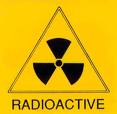Fukushima: Radioactive Seafood in Canadian Grocery Stores
Canadian 10th Grader Discovers Radioactive Imported Seafood Long After Government Stopped Testing

Radioactive seafood isn’t foreign to Canadian grocery stores, but we have no research and development professionals to thank for that information—just a 10th grader from Alberta.
Bronwyn Delacruz of Grande Prairie Composite High School in Alberta made her discovery with the help of a $600 Geiger counter her father purchased and the need to complete a science project. She told Metro Canada that she decided to test the radioactivity of seafood—mostly seaweed—because she was shocked to learn that the Canadian Food Inspection Agency (CFIA) stopped testing imported foods in that manner the year after the Fukushima nuclear disaster in Japan.
“Some of the kelp that I found was higher than what the International Atomic Energy Agency sets as radioactive contamination, which is 1,450 counts over a 10-minute period,” she said. “Some of my samples came up as 1,700 or 1,800.”

According to the Daily Herald Tribune, Bronwyn tested more than 300 seaweed samples, including 15 brands exported from Japan, China, California, Washington, New Brunswick and British Columbia. Her work earned her gold honors at a regional science fair in Peace River, Alberta. In May, she will compete nationally in Ontario.
“I’m kind of concerned that this is landing in our grocery stores and that if you aren’t measuring it, you could just be eating this and bringing home to your family,” Bronwyn said.
The CFIA’s website says that it found more than 200 seafood samples in 2011 and 2012 that were “found to be below Health Canada’s actionable levels for radioactivity.” That was enough to lift the country’s enhanced import controls.
“No additional testing is planned,” the site reads.
According to Miles O’Brien, it’s the same scenario in the U.S. One of his recent PBS reports revealed that scientists from the Woods Hole Oceanographic Institute were turned down after requesting minimal federal support by five agencies. There are no federal agencies conducting comprehensive, on-the-ground analyses of how much Fukushima radiation has made its way into the air and oceans of the U.S.
In October, Dr. David Suzuki predicted that it would take three years from the time of the incident for the radiation plume to reach the West Coast. That would have been in the past month. That concept wasn’t lost on young Bronwyn.
“The way the currents and the radiation would arrive in Canada, it wouldn’t arrive until now, about 2014 or 2013,” she said.
In 2012, the Vancouver Sun reported that cesium-137, the radioactive form of cesium, was found in various seafood products that were imported from Japan, including:
• 73 percent of the mackerel
• 91 percent of the halibut
• 92 percent of the sardines
• 93 percent of the tuna and eel
• 94 percent of the cod and anchovies
• 100 percent of the carp, seaweed, shark and monkfish
“Any amount of leaked radiation is harmful to the planet and the health of all species, including humans,” Suzuki wrote. “A major release of radioactivity, such as that from Fukushima, is a huge concern, with unknowns remaining around long-term health risks such as cancers.”

